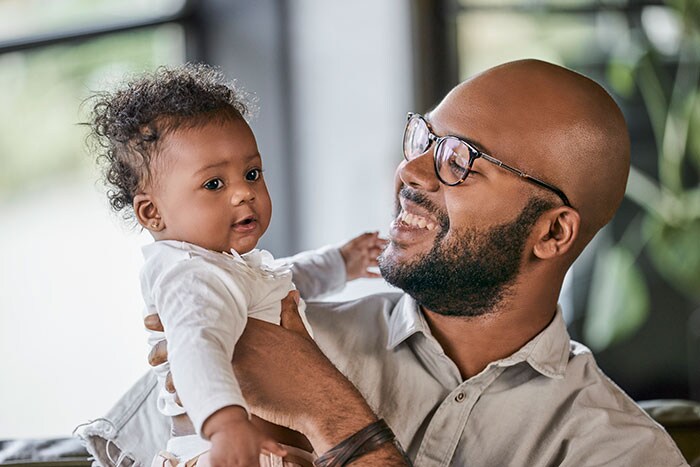Aug 01, 2019
New study from Philips reveals the importance of partner participation in the breastfeeding process
Amsterdam, the Netherlands – Coinciding with World Breastfeeding week 2019, Royal Philips (NYSE:PHG, AEX:PHIA), a global leader in health technology and mother and child care, has released new data revealing the important role that partners can play in the breastfeeding process. While breastfeeding naturally remains a mother’s job, breastfeeding mothers do need support from their surrounding network.
Study findings
The study findings from Philips Avent show that almost all mums surveyed would like their partners to be involved in every aspect of looking after their newborn baby. 65% of mums would like their partners to help prepare a bottle feed, while 63% want support feeding the baby at night. Fortunately, most dads (81%) want to help, but there are some areas where they could be doing more to support. While most partners (82%) are involved in comforting and checking up on the baby, less than half (46%) clean the breast pumps and the bottles for the next feeding and only 41% spend time researching how to feed the baby. This means there are some aspects of caring for a newborn that are still falling to mum and there is a need for greater education for partners. This is reflected by the research findings which show that 76% of mothers think that more information is needed on how partners can support the breastfeeding journey. With evidence suggesting that by educating fathers on the benefits of breastfeeding we can double the likelihood of babies being exclusively breastfed for the first 6 months, this a hugely important topic for new parents to discuss and consider [2]. The health benefits of breastfeeding for both mother and baby are widely acknowledged, but while global breastfeeding initiation rates at birth remain high at around 60-95%, these are gradually declining over time. This is resulting in lower breastfeeding rates at 6 months of age [3]. Providing ongoing support for breastfeeding mothers then, is key, especially with women becoming increasingly time strained and many having to juggle childcare with careers. Partners can play an active role in the breastfeeding process and fortunately many say they would like to do so. With this in mind, Philips Avent wants to empower parents to enable breastfeeding this World Breastfeeding Week, by underlining the invaluable importance of the supporting network and encouraging partners to take a more active role in the process. Friends, family members and healthcare professionals can all play a part, and getting a partner involved in the breastfeeding process has a wealth of proven benefits. Importantly, studies show that women who receive support from a partner are more likely to initiate and continue breastfeeding for longer [4], while involvement in the feeding process also encourages father and infant bonding during the post-partum period . This has been shown to have several benefits for the infant, including reducing cognitive delay and promoting weight gain in pre-term infants [5].
Men are now much more willing to be hands-on in the child raising process. Not only are men more often present at births, but they are also taking on a lot of the childcare duties too.
Prof. Abou-Dakn
Chief physician of Gynaecology at the St. Joseph Hospital in Berlin
“The role of the father has changed in the past few decades,” says Prof. Abou-Dakn, Chief physician of Gynaecology at the St. Joseph Hospital in Berlin and a specialist on the topic of father-infant bonding. “Men are now much more willing to be hands-on in the child raising process. Not only are men more often present at births, but they are also taking on a lot of the childcare duties too. This includes supporting the breastfeeding process, which is great for father-infant bonding and has long-lasting benefits which baby will carry into later life.” Understanding the challenges of breastfeeding for both parents, Philips Avent is committed to sharing knowledge and providing solutions that can support the process for all involved. Having worked closely with healthcare professionals and parents for over 35 years, Philips Avent has developed a deep understanding of mothers, babies, healthy feeding practices and physiology. Research using ultrasound technology to visualize and record babies and mothers breastfeeding has enabled Philips Avent to develop solutions that mimic the physiology of the breast and the natural drinking reflexes of the baby. These deep insights also allow Philips Avent to co-create solutions and share their expertise with the wider healthcare and parenting community, helping to successfully educate and inform parents about breastfeeding. By helping parents to embrace every challenge with confidence, Philips Avent hopes to encourage breastfeeding for longer. [1] https://www.ncbi.nlm.nih.gov/pmc/articles/PMC4282396/ [2] Effectiveness of targeting fathers for breastfeeding promotion: systematic review and meta-analysis, 2018. [3] WHO, UNICEF, 2017, 2018 , CDC, 2018, Theurich et al. JPGN, 2019, Australian DH, 2019, China Department of Maternal and Child Health, 2017 [4] https://www.ncbi.nlm.nih.gov/pmc/articles/PMC4282396/ [5] Sarkadi A, Kristiansson R, Oberklaid F, Bremberg SActa Paediatr. 2008 Feb; 97(2):153-8.
About the research
Unless otherwise referenced, all figures have been taken from a Philips Avent survey on father’s involvement in breastfeeding amongst 3500 Pregnancy+ users worldwide, June 2019
About Royal Philips
Royal Philips (NYSE: PHG, AEX: PHIA) is a leading health technology company focused on improving people's health and enabling better outcomes across the health continuum from healthy living and prevention, to diagnosis, treatment and home care. Philips leverages advanced technology and deep clinical and consumer insights to deliver integrated solutions. Headquartered in the Netherlands, the company is a leader in diagnostic imaging, image-guided therapy, patient monitoring and health informatics, as well as in consumer health and home care. Philips generated 2018 sales of EUR 18.1 billion and employs approximately 78,000 employees with sales and services in more than 100 countries. News about Philips can be found at www.philips.com/newscenter.





